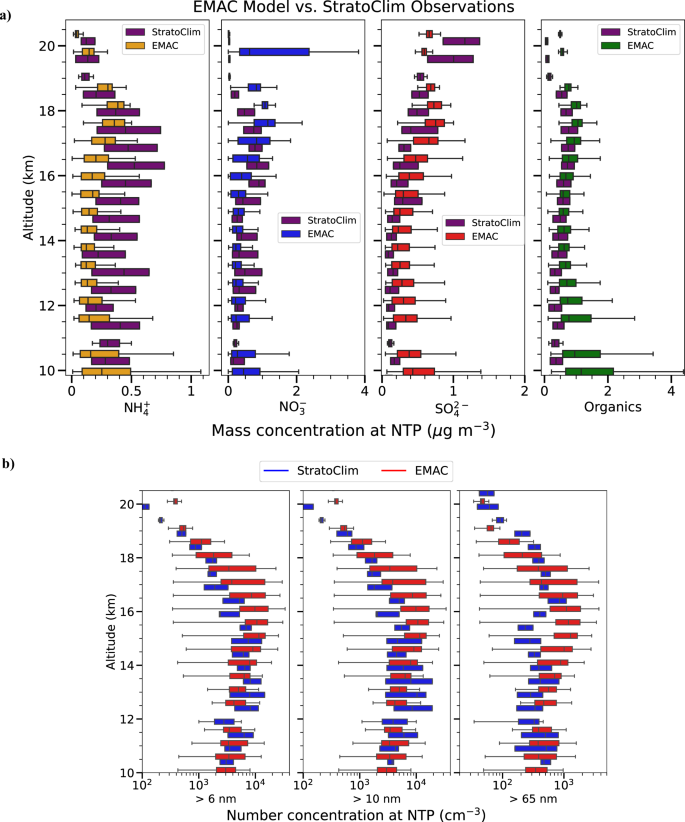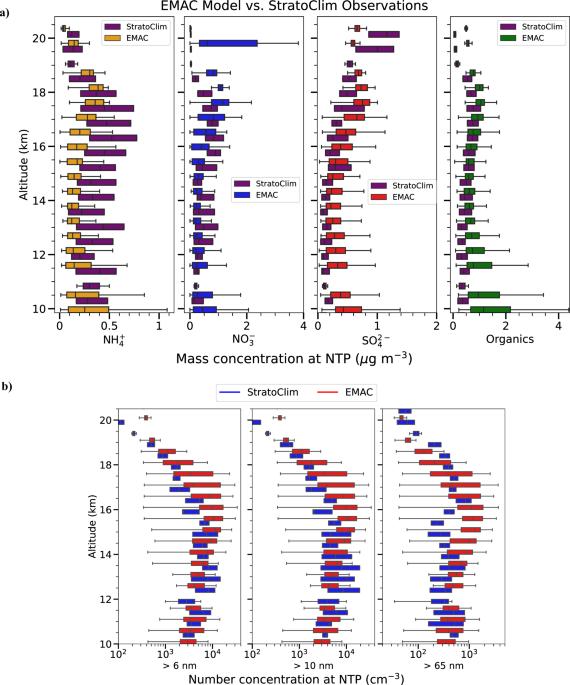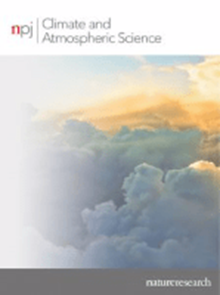The impact of ammonia on particle formation in the Asian Tropopause Aerosol Layer
IF 8.5
1区 地球科学
Q1 METEOROLOGY & ATMOSPHERIC SCIENCES
引用次数: 0
Abstract
During summer, ammonia emissions in Southeast Asia influence air pollution and cloud formation. Convective transport by the South Asian monsoon carries these pollutant air masses into the upper troposphere and lower stratosphere (UTLS), where they accumulate under anticyclonic flow conditions. This air mass accumulation is thought to contribute to particle formation and the development of the Asian Tropopause Aerosol Layer (ATAL). Despite the known influence of ammonia and particulate ammonium on air pollution, a comprehensive understanding of the ATAL is lacking. In this modelling study, the influence of ammonia on particle formation is assessed with emphasis on the ATAL. We use the EMAC chemistry-climate model, incorporating new particle formation parameterisations derived from experiments at the CERN CLOUD chamber. Our diurnal cycle analysis confirms that new particle formation mainly occurs during daylight, with a 10-fold enhancement in rate. This increase is prominent in the South Asian monsoon UTLS, where deep convection introduces high ammonia levels from the boundary layer, compared to a baseline scenario without ammonia. Our model simulations reveal that this ammonia-driven particle formation and growth contributes to an increase of up to 80% in cloud condensation nuclei (CCN) concentrations at cloud-forming heights in the South Asian monsoon region. We find that ammonia profoundly influences the aerosol mass and composition in the ATAL through particle growth, as indicated by an order of magnitude increase in nitrate levels linked to ammonia emissions. However, the effect of ammonia-driven new particle formation on aerosol mass in the ATAL is relatively small. Ammonia emissions enhance the regional aerosol optical depth (AOD) for shortwave solar radiation by up to 70%. We conclude that ammonia has a pronounced effect on the ATAL development, composition, the regional AOD, and CCN concentrations.


氨对亚洲对流层顶气溶胶层粒子形成的影响
夏季,东南亚的氨排放会影响空气污染和云的形成。南亚季风的对流输送将这些污染气团带入对流层上部和平流层下部(UTLS),并在反气旋流动条件下积聚。这种气团积聚被认为有助于粒子的形成和亚洲对流层顶气溶胶层(ATAL)的发展。尽管氨和微粒铵对空气污染的影响众所周知,但对 ATAL 却缺乏全面的了解。本模拟研究评估了氨对颗粒物形成的影响,重点是 ATAL。我们使用了 EMAC 化学-气候模型,其中纳入了从欧洲核子研究中心 CLOUD 实验室的实验中得出的新颗粒物形成参数。我们的昼夜周期分析证实,新粒子的形成主要发生在白天,形成率增加了 10 倍。与不含氨的基线情景相比,这种增加在南亚季风UTLS中尤为突出,因为深层对流会从边界层引入高浓度的氨。我们的模型模拟显示,这种由氨驱动的粒子形成和增长导致南亚季风地区成云高度的云凝结核(CCN)浓度增加高达 80%。我们发现,氨通过粒子生长对 ATAL 中的气溶胶质量和组成产生了深远影响,与氨排放相关的硝酸盐含量的数量级增长就表明了这一点。然而,氨驱动的新颗粒形成对 ATAL 气溶胶质量的影响相对较小。氨的排放使区域气溶胶光学深度(AOD)对短波太阳辐射的影响提高了 70%。我们的结论是,氨对 ATAL 的发展、组成、区域 AOD 和 CCN 浓度都有明显的影响。
本文章由计算机程序翻译,如有差异,请以英文原文为准。
求助全文
约1分钟内获得全文
求助全文
来源期刊

npj Climate and Atmospheric Science
Earth and Planetary Sciences-Atmospheric Science
CiteScore
8.80
自引率
3.30%
发文量
87
审稿时长
21 weeks
期刊介绍:
npj Climate and Atmospheric Science is an open-access journal encompassing the relevant physical, chemical, and biological aspects of atmospheric and climate science. The journal places particular emphasis on regional studies that unveil new insights into specific localities, including examinations of local atmospheric composition, such as aerosols.
The range of topics covered by the journal includes climate dynamics, climate variability, weather and climate prediction, climate change, ocean dynamics, weather extremes, air pollution, atmospheric chemistry (including aerosols), the hydrological cycle, and atmosphere–ocean and atmosphere–land interactions. The journal welcomes studies employing a diverse array of methods, including numerical and statistical modeling, the development and application of in situ observational techniques, remote sensing, and the development or evaluation of new reanalyses.
 求助内容:
求助内容: 应助结果提醒方式:
应助结果提醒方式:


